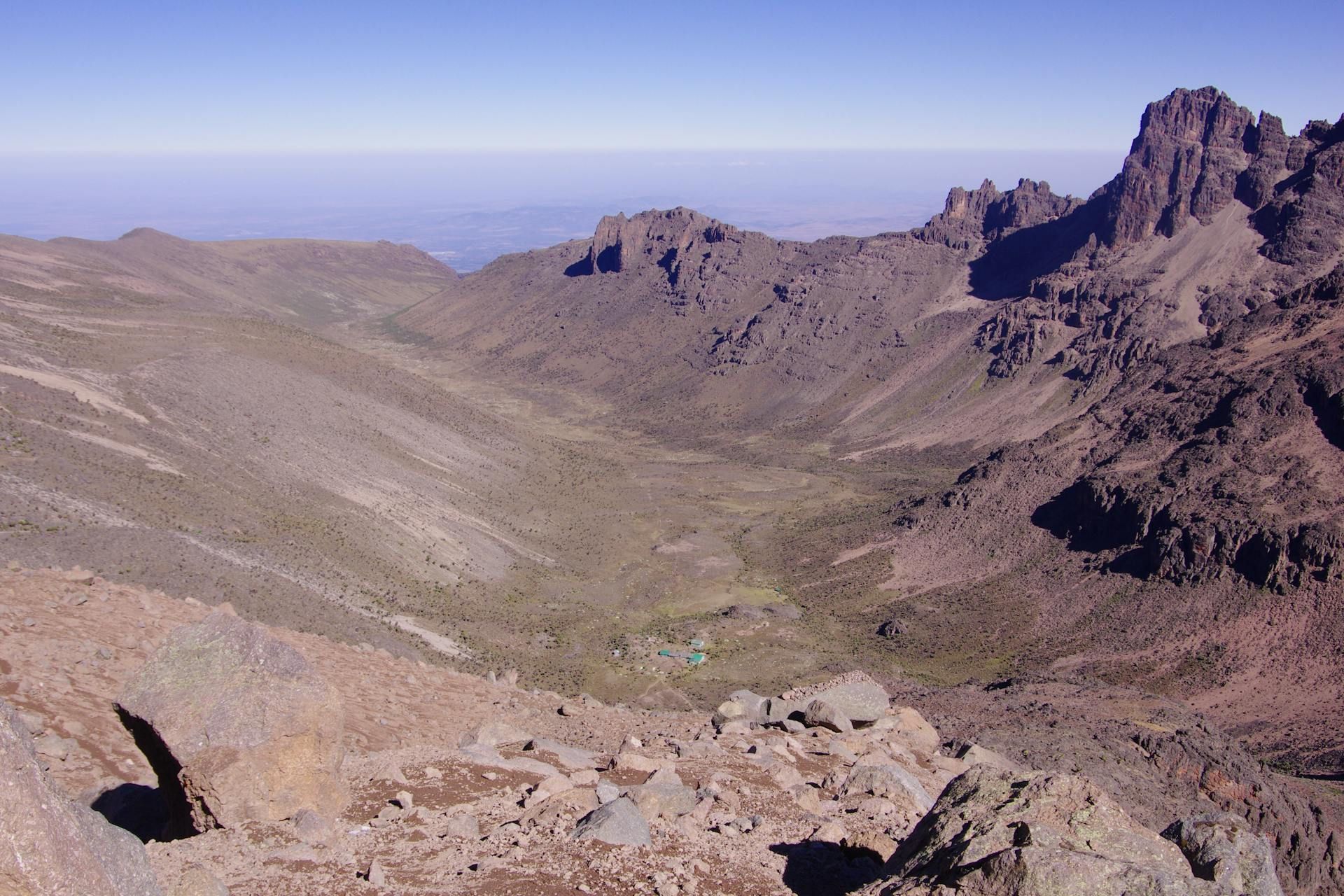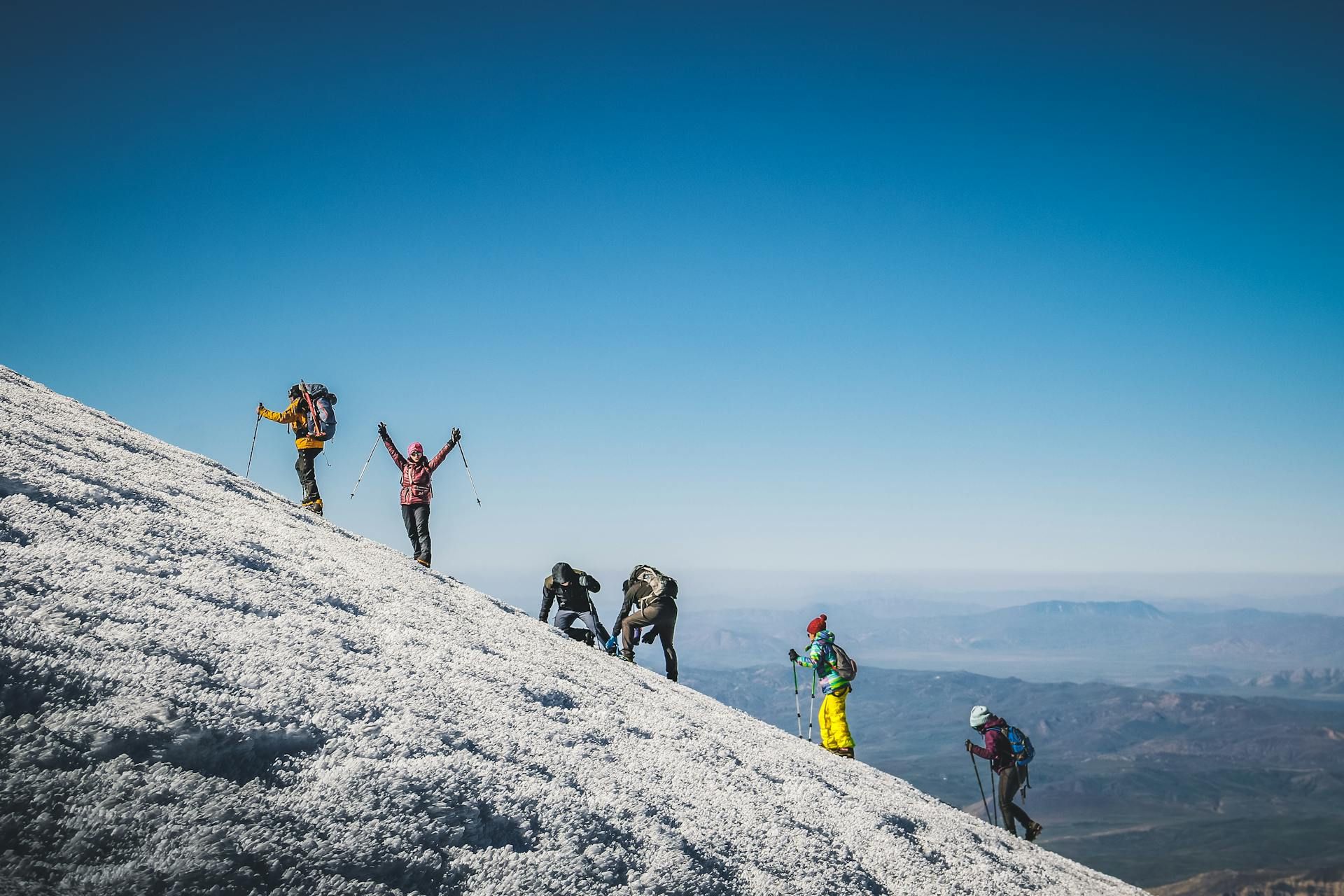
Hiking Mount Kenya: Your Complete Guide to Routes, Tips, and Best Time to Climb
7 min readHiking Mount Kenya: Your Complete Guide to Routes, Tips, and Best Time to Climb
Standing majestically at 5,199 meters, Mount Kenya is Africa's second-highest peak and one of the continent's most rewarding climbing experiences. Unlike its famous neighbor Kilimanjaro, Mount Kenya offers a more technical and diverse climbing adventure, with pristine alpine scenery, unique wildlife, and multiple route options that cater to different skill levels.
Whether you're a seasoned mountaineer or an ambitious beginner, this comprehensive guide will help you plan your Mount Kenya adventure with confidence.
Hiking Mount Kenya
- Hiking Mount Kenya: Your Complete Guide to Routes, Tips, and Best Time to Climb
- Understanding Mount Kenya's Peaks
- The Three Main Routes: Choosing Your Path
- 1. Naro Moru Route (The Direct Approach)
- 2. Sirimon Route (The Gradual Climb)
- 3. Chogoria Route (The Scenic Champion)
- Popular Route Combinations
- Best Time to Climb Mount Kenya
- Peak Seasons (December to March)
- Secondary Season (July to October)
- Wet Seasons (April-June, November)
- Essential Preparation Tips
- Physical Fitness
- Altitude Acclimatization
- Mental Preparation
- Essential Gear Checklist
- Clothing System
- Technical Equipment
- Personal Items
- Health and Safety Considerations
- Altitude Sickness Prevention
- Weather Awareness
- Wildlife Safety
- Permits and Logistics
- Park Fees and Permits
- Guide Services
- Accommodation Options
- Cultural and Environmental Responsibility
- Leave No Trace Principles
- Supporting Local Communities
- Planning Your Mount Kenya Adventure
- Timeline for Planning
- Budget Considerations
- Summit Day Strategy
- After Your Climb
- Recovery and Reflection
- Giving Back
- Frequently Asked Questions (FAQs)
- Conclusion
Understanding Mount Kenya's Peaks
Mount Kenya has three main summits:
- Batian (5,199m) - The highest peak, requiring technical rock climbing
- Nelion (5,188m) - The second highest, also requiring technical skills
- Point Lenana (4,985m) - The third highest and the goal for most trekkers
Most hikers aim for Point Lenana, which offers spectacular views and doesn't require technical climbing equipment or expertise. This makes it accessible to fit hikers with proper preparation.

The Three Main Routes: Choosing Your Path
1. Naro Moru Route (The Direct Approach)
Best for: Beginners and those short on time Distance: 14 kilometers Duration: 4-5 days
The Naro Moru route is the shortest and most straightforward path to Point Lenana. Starting from the west side of the mountain, this route offers a direct ascent that, while steep in sections, provides excellent acclimatization opportunities.
Highlights:
- Quickest route to the summit
- Well-established trail with good facilities
- Passes through the famous "Vertical Bog" section
- Offers dramatic views of the main peaks
Challenges:
- Can be crowded during peak season
- Less scenic variety compared to other routes
- Steeper ascent profile
2. Sirimon Route (The Gradual Climb)
Best for: Those wanting better acclimatization Distance: Slightly longer than Naro Moru Duration: 5-6 days
The Sirimon route approaches from the northwest and is considered the best option for beginners due to its gradual altitude gain. This route provides excellent acclimatization, reducing the risk of altitude sickness.
Highlights:
- Most gradual ascent profile
- Excellent for acclimatization
- Beautiful moorland scenery
- Less crowded than Naro Moru
Challenges:
- Longer approach to the summit
- Can be cold and windy
- Limited water sources on upper sections
3. Chogoria Route (The Scenic Champion)
Best for: Experienced hikers seeking stunning scenery Distance: Longest of the three main routes Duration: 6-7 days
The Chogoria route is widely regarded as the most beautiful path up Mount Kenya. Approaching from the southeast, this route showcases the mountain's diverse ecosystems and offers breathtaking views throughout the journey.
Highlights:
- Most scenic route with diverse landscapes
- Passes beautiful Lake Michaelson
- Stunning views of the Gorges Valley
- Rich wildlife viewing opportunities
- Cultural interactions in Chogoria town
Challenges:
- Longest and most demanding route
- Requires good fitness level
- Weather can be unpredictable
- More expensive due to longer duration
Popular Route Combinations
Many experienced climbers choose to ascend via one route and descend via another, maximizing their mountain experience:
Sirimon-Chogoria Traverse (6-7 days): The most popular combination, offering great acclimatization on the way up and spectacular scenery on the descent.
Sirimon-Naro Moru (5 days): A balanced option combining gradual ascent with a quicker descent.
Best Time to Climb Mount Kenya
Peak Seasons (December to March)
This is considered the best time for climbing Mount Kenya. The weather is generally drier, with clearer skies providing excellent visibility for summit attempts and photography.
Advantages:
- Minimal rainfall
- Clear mountain views
- Stable weather patterns
- Excellent for photography
Considerations:
- Higher visitor numbers
- More expensive accommodation and guides
- Can be crowded on popular routes
Secondary Season (July to October)
Another excellent window for climbing, with generally dry conditions and good visibility.
Advantages:
- Good weather conditions
- Fewer crowds than peak season
- Pleasant daytime temperatures
Wet Seasons (April-June, November)
While climbing is possible year-round, these months see increased rainfall and cloud cover.
Challenges:
- Higher chance of rain and snow
- Limited visibility
- Muddy and slippery trail conditions
- Higher risk of weather-related delays
Essential Preparation Tips
Physical Fitness
Mount Kenya demands good physical conditioning. Start your training at least 2-3 months before your climb:
- Cardiovascular endurance: Focus on activities like running, cycling, or swimming
- Leg strength: Include squats, lunges, and step-ups in your routine
- Practice hikes: Build up to 6-8 hour hikes with a loaded backpack
- Local training: In Kenya, practice on trails like Rurimeria, Table Mountain, and Elephant Hills
Altitude Acclimatization
- Plan for gradual ascent with rest days
- Stay hydrated throughout the climb
- Listen to your body and recognize altitude sickness symptoms
- Consider spending a night or two at moderate altitude before starting
Mental Preparation
- Research your chosen route thoroughly
- Set realistic expectations
- Prepare for challenging weather conditions
- Practice mindfulness or meditation techniques for summit day

Essential Gear Checklist
Clothing System
- Base layers: Moisture-wicking materials
- Insulation layers: Fleece or down jacket
- Outer shell: Waterproof and windproof jacket and pants
- Head and hands: Warm hat, sun hat, waterproof gloves, liner gloves
- Feet: Quality hiking boots, gaiters, warm socks
Technical Equipment
- Backpack: 40-50 liter capacity
- Sleeping system: Four-season sleeping bag, sleeping pad
- Navigation: Map, compass, GPS device
- Lighting: Headlamp with extra batteries
- Trekking poles: Essential for stability and reducing joint stress
Personal Items
- Sun protection: Sunglasses, sunscreen (high SPF)
- First aid kit: Including altitude sickness medication
- Water system: Water bottles or hydration bladder, purification tablets
- Food: High-energy snacks for summit day
Health and Safety Considerations
Altitude Sickness Prevention
- Ascend gradually and allow proper acclimatization time
- Stay well-hydrated (3-4 liters per day)
- Avoid alcohol and sleeping pills
- Recognize symptoms: headache, nausea, fatigue, dizziness
- Descend immediately if symptoms worsen
Weather Awareness
Mount Kenya's weather is notoriously unpredictable. Be prepared for:
- Sudden temperature drops
- Rain, hail, or snow at any time
- Strong winds on exposed ridges
- Lightning during afternoon storms
Wildlife Safety
- Respect park regulations and stay on designated trails
- Properly store food to avoid attracting animals
- Maintain safe distances from wildlife
- Follow your guide's instructions regarding animal encounters
Permits and Logistics
Park Fees and Permits
- Entry permits are required and can be obtained at park gates
- Fees vary for residents and non-residents
- Consider purchasing Kenya Wildlife Service (KWS) annual passes for multiple visits
Guide Services
While not mandatory for the main routes, hiring local guides and porters supports the community and enhances safety:
- Guides: Provide route knowledge, safety oversight, and cultural insights
- Porters: Carry equipment, allowing you to focus on the climb
- Cooks: Prepare meals and manage camp logistics
Accommodation Options
- Mountain huts: Available on main routes, basic but weather-proof
- Camping: More flexible but requires proper equipment
- Combination: Many climbers use both huts and camping
Cultural and Environmental Responsibility
Leave No Trace Principles
- Pack out all waste
- Minimize campfire use
- Respect wildlife and vegetation
- Stay on designated trails
- Be considerate of other climbers
Supporting Local Communities
- Hire local guides and porters
- Purchase supplies from local businesses
- Respect local customs and traditions
- Consider visiting community projects in nearby towns
Planning Your Mount Kenya Adventure
Timeline for Planning
- 6 months before: Book time off, begin fitness training
- 3 months before: Finalize route choice, book guides/accommodation
- 1 month before: Confirm gear, check weather forecasts
- 1 week before: Final preparations, pack equipment
Budget Considerations
- Park fees: $55-65 per day for non-residents
- Guide/porter fees: $20-40 per person per day
- Accommodation: $10-30 per night depending on option
- Equipment rental: Available in Nairobi and Nanyuki
- Transportation: Budget for transfers to/from park gates
Summit Day Strategy
The final push to Point Lenana typically begins around 3:00 AM to reach the summit for sunrise. This timing helps avoid afternoon weather and provides the best visibility.
Summit Day Tips:
- Start early (2:30-3:00 AM)
- Dress in layers for changing temperatures
- Carry plenty of water and high-energy snacks
- Pace yourself conservatively
- Take photos quickly and begin descent
After Your Climb
Recovery and Reflection
- Allow time for rest and recovery
- Share your experience with fellow climbers
- Consider writing about your journey
- Plan your next mountain adventure
Giving Back
- Leave reviews for guide services used
- Share responsible climbing practices
- Support conservation efforts
- Encourage others to experience Mount Kenya responsibly
Frequently Asked Questions (FAQs)
Conclusion
Mount Kenya offers one of Africa's most rewarding climbing experiences, combining physical challenge with stunning natural beauty. Whether you choose the direct approach of Naro Moru, the gradual ascent of Sirimon, or the scenic beauty of Chogoria, proper preparation and respect for the mountain will ensure a successful and memorable adventure.
Remember that reaching the summit is only half the journey – a safe descent is equally important. Take time to appreciate the unique ecosystems, diverse wildlife, and incredible landscapes that make Mount Kenya a truly special destination.
With proper planning, adequate preparation, and respect for the mountain environment, your Mount Kenya climb will be an experience you'll treasure for a lifetime. The sense of accomplishment from standing atop Point Lenana, watching the sunrise over the African landscape, makes every challenging step worthwhile.
Ready to take on Mount Kenya? Start your preparation today, and soon you'll be standing on the rooftop of Kenya, with memories and experiences that will last a lifetime.